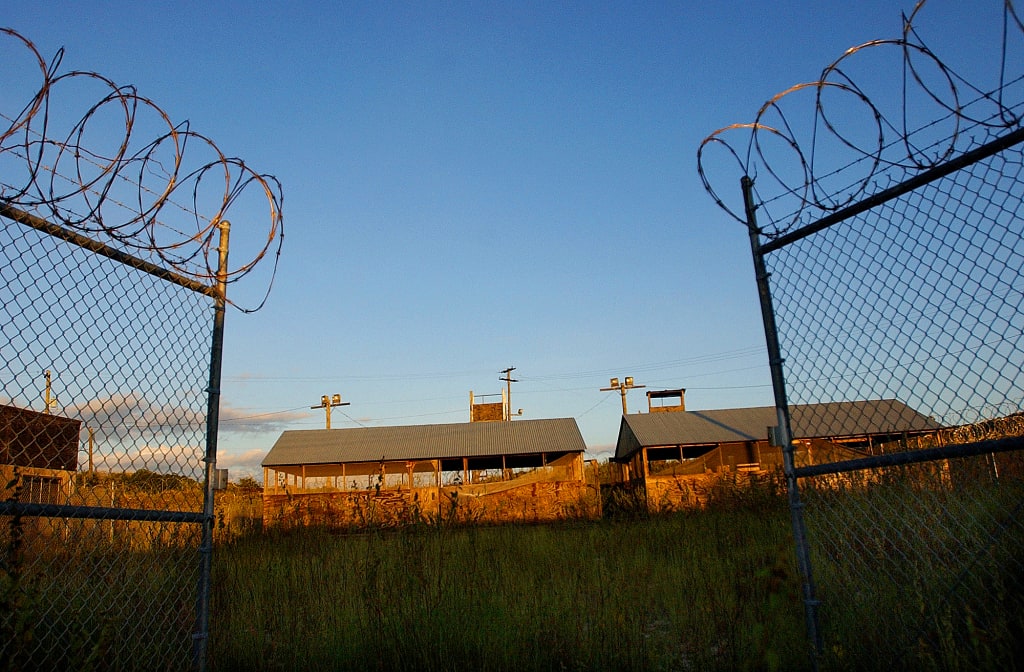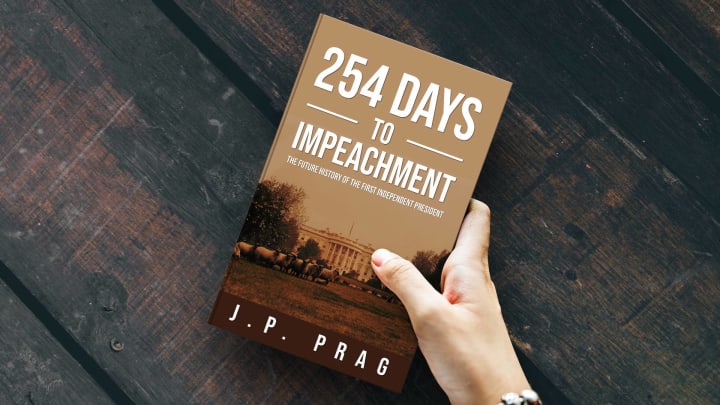
January 20th (Miami, FL) – Just minutes into the beginning of this administration, the new President issued the first of what would end up being ten Executive Orders. While it is traditional for the White House to provide the press with the text of such orders with detailed explanations and examinations beforehand, this President opted to surprise everyone and only produce that information after announcing them to the world. With the ink of the President’s signature still wet on the official documents, many questions remained about not just the logistics of the President’s actions, but on the legality.
In what can only be surmised as the President’s top priority given its status as being the first order of business, the text stated that all detainees being held at Guantanamo Bay in Cuba were to be transferred to Federal prisons within 45 days. Further, once on the mainland, the President demanded that the courts start judicial proceedings against each of the prisoners within 90 days. The order was light on details about what the charges would be, who would bring them, and how the entire operation would be paid for, but it must be imagined that the Justice Department and Department of Defense would be involved. The President stressed that the individuals would be treated the same as any other prisoner in the Federal system—including access to public defenders if they cannot afford an attorney of their own.
The order also specifically drew attention to the wardens of these penitentiaries by highlighting that they would be personally responsible for guaranteeing the safety of the prisoners, though no penalty was laid out should they fail to do so. However, this unprovoked attack on Federal employees while offering preferential treatment to alleged terrorists rankled many of the President’s opponents. One former nominee for President was quoted as saying:
Isn’t it obvious what a mistake it was to allow this know-nothing idiot to assume the most powerful seat on Earth? That is why we challenged the results of this election—results that are still in question. How this ignoramus was allowed to steal the election, I’ll never know and will keep fighting. But while this travesty is allowed to continue, what you are seeing here will be the result. Instead of protecting American citizens and looking out for the people who were born here, this so-called President has threatened hard-working Federal employees in order to protect terrorists!
Earlier during the inauguration speech, the President apparently foresaw such criticisms. While explaining the need for this order, the President said that the Constitution applies to all people—whether from the United States or not—and that we should not try to find and use loopholes to avoid upholding our own laws.
According to institutions like the Center for Constitutional Rights, circumventing American law is allegedly what the Guantanamo Bay Detention Center is infamously known for. The United States was able to permanently lease a small piece of Cuba starting in 1903 as a remnant from the Spanish-American war. Although Cuba has long called to remove the Naval Base—of which the Detention Center is a part of—from their island and for the United State to return full control of the property to them, each subsequent U.S. administration has refused to do so. Further complicating the issue is that after the 9/11 terrorist attacks on the Twin Towers in New York City, the Pentagon outside Washington, D.C., and other targets, President George W. Bush and his administration decided to use a camp at the Naval Base to detain and interrogate “extraordinarily dangerous people.” Although the Detention Center became more prominent and well known during the Bush presidency, in practice Guantanamo Bay had been used for such purposes dating back decades.
Over the course of the Bush administration, the Detention Center became notorious for accusations of abuse, torture, sexual assault, and the general secrecy around the prisoners’ treatment. While President Bush lost several court cases to try to maintain complete clandestineness and provide no due process rights to those detained there, the Supreme Court always stopped short of saying that the inmates had any Constitutional rights or that Guantanamo Bay fell under full United States jurisdiction.
During subsequent presidencies, Barack Obama and Joe Biden also attempted to shut down the Detention Center and transfer the prisoners to the mainland. President Obama was rebuffed immediately by both a military judge at Guantanamo Bay and then by Congress itself. In 2009 and 2011, Congress overwhelming passed legislation that effectively removed all funding that could be used to transfer detainees. As such, despite such promises, neither of those Presidents were able to completely shut down the Detention Center, although they were successful in reducing the population.
While speaking with limited members of the press aboard Air Force One following the inauguration, the question was posed how the administration intended to get around these seemingly settled points of law. The President instead insisted that the matter was not settled at all and that Congress had overstepped their bounds. The President told those assembled aboard the aircraft:
Deciding how prisoners are handled is completely within the purview of the Executive Branch and not something Congress has a say in... These laws were un-Constitutional when written and remain so today. Should Congress attempt to enforce them, my administration will gladly challenge them in court.
A date in court seems inevitable no matter the circumstances, especially because this was not where the Executive Order ended. According to the text, once all detainees are removed from Guantanamo Bay, the entire Naval Base must be evacuated of all personnel and equipment within 180 days. Anything that cannot be taken with the troops is to be destroyed, leaving nothing behind. Finally, after all of that, the United States is to capitulate to Cuba’s more than century-long demand and return the land to their sovereign control.
Many Cuban refugees and their descendants living in America responded negatively to this revelation. Reactions on social media ranged from disbelief to downright hostility. The general thread was that returning the land would be rewarding the Communist regime for their decades of horrific treatment against dissenters and supporters alike. Again, when presented with this, the President demurred and insisted:
As Commander-in-Chief, I have final say on all military operations. Since Guantanamo Bay is a Naval Base, and I say we no longer need it, then we do not and under my authority I can shut it down, forever.
Although former-Presidents Obama and Biden attempted to close the Detention Center and ease restrictions on the island nation, neither one considered closing the Naval Base itself, nor returning the land to Cuba. This step is far beyond what either imagined, and is contrary to an Executive Order by then-President Donald Trump in January 2018. Since Executive Orders are not law, Presidents can and have overridden the instructions of their predecessors. However, because this order does not explicitly repeal President Trump’s order, the current President appears to be trying to avoid triggering a lawfully required administrative review. Such an action would delay the implementation of this plan by at least six months. When pressed on the issue, the President mostly sidestepped and did not provide a direct response.
Despite that, during conversations with reporters and when revealing the initial Executive Order, the President stressed a need to stand by what the courts may decide. The order has a specific clause which states that all parts of the Executive Branch will honor the findings, opinions, and requirements of the courts and stand by whatever they decide. While the Executive Order was particularly about the results of the trials for the detainees, the President stressed that the administration would always respect the will of the courts and would defer to their decisions, even if the Supreme Court ruled against them.
And that is not an insignificant risk, though the President did not seem concerned. Overall, it appeared that the leader of the free world was more focused on the symbolism of the order than on the substance and potential for its implementation. After all, the President ran on a platform of equality and the law being applied evenly to all people. It is an alleged naïveté that the President’s opponents have pounced on in the past; that the idealism of American freedom must be tempered with pragmatism and the reality of facts on the ground—that freedom is never free and impossible without taking hard and often distasteful, but necessary, actions. Yet those people were not elected President, while the dreamer now sits in the Oval Office.

The above piece is an excerpt from the speculative fiction novel 254 Days to Impeachment: The Future History of the First Independent President by J.P. Prag, available at booksellers worldwide.

Learn more about author J.P. Prag at www.jpprag.com.

254 Days to Impeachment is a work of mixed fiction and nonfiction elements. With the fiction elements, any names, characters, places, events, and incidents that bear any resemblance to reality is purely coincidental. For the nonfiction elements, no names have been changed, no characters invented, no events fabricated except for hypothetical situations.
About the Creator
J.P. Prag
J.P. Prag is the author of "Aestas ¤ The Yellow Balloon", "Compendium of Humanity's End", "254 Days to Impeachment", "Always Divided, Never United", "New & Improved: The United States of America", and more! Learn more at www.jpprag.com.






Comments
There are no comments for this story
Be the first to respond and start the conversation.